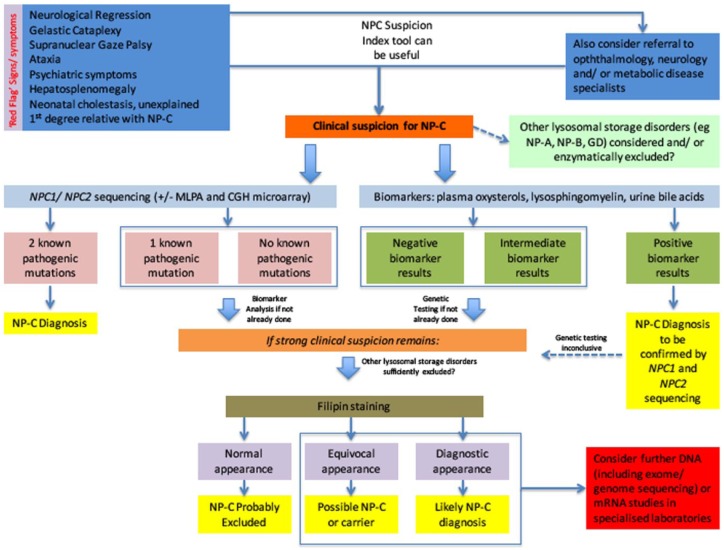Figure 1.
Proposed diagnostic algorithm for patients with suspected Niemann-Pick type C disease.
Although clinically heterogeneous, several ‘red flag’ signs and symptoms exist, which should alert clinicians towards suspecting and investigating for the presence of the disorder. The differential diagnosis is often broad and includes other lysosomal storage disorders that also need to be considered early on. In any case, there should be a low threshold in referring suspected cases to specialist clinics. Genetic and biomarker analysis can be performed early on in the diagnostic pathway, provided these tests are available to the clinician. Positive biomarker results should prompt NPC1 and NPC2 gene testing. Identification of two known pathogenic mutations (one on each allele) via sequencing confirms the diagnosis, while studies looking for exon or whole gene deletions might also prove diagnostic in a few cases. In clinically suspicious cases of inconclusive genotype, other lysosomal storage disorders should be excluded and other tests (such as filipin staining or advanced genotypic studies) might be considered.
+/-, test might need to be considered; CGH, comparative genomic hybridization; DNA, deoxyribonucleic acid; GD, Gaucher disease; MLPA, multiplex ligation-dependent probe amplification; mRNA, messenger ribonucleic acid; NP-A, Niemann-Pick type A; NP-B, Niemann-Pick type B; NP-C, Niemann-Pick type C.

